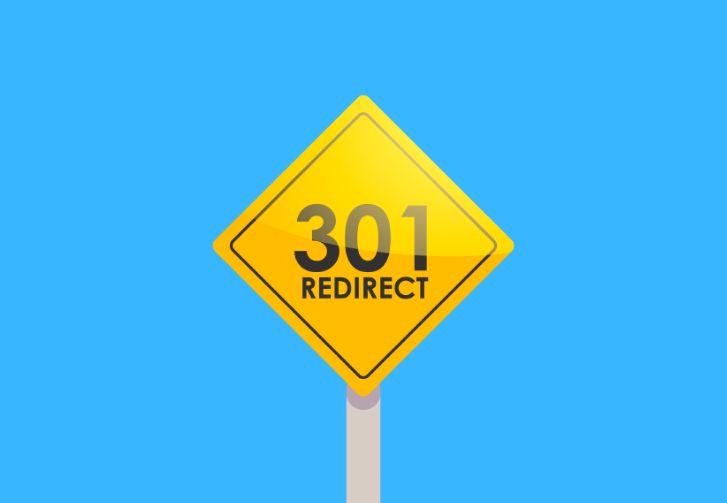
301 redirect is used to indicate a website’s page to be permanently removed to a new direction. This 301 refers to a new HTTP status code; one that will take a visitor to a new page.
Suppose Teach Planet News is your website. You have changed its URL from blog.techplanetnews.com to the new one techplanetnews.com/blog. So, the time you use 301 redirects. The same lets the browser know that the URL has moved permanently from its previous URL to the new one. This is the permanent location and we do not intend to move it back in the future.
When you use 301 redirect your old URL to the new URL; this helps maximize your added content’s potential. This way you can also eliminate the issues with duplicate content including your keyword cannibalization. Here you can see why 301 redirects become important for a website’s SEO (search engine optimization).
Let us explore all the details for the 301 redirect. We have added all the in-depth details for the same below.
What is the impact of 301 redirects on SEO?
There are various factors you must understand. We have given you some of the top reasons for the impact of 301 redirects on SEO.
Now you have understood that a 301 is a serve side. 301 redirect is used for permanently changed URLs, right? You can use 301 redirects for your website. When you are facing the following issues or want to do the same. Let us check what are all those situations where we can use 301 redirects.
- You can implement 301 redirects when you are going to change from HTTP to HTTPS.
- Are you changing your domain? If yes. You must be implementing the same method of 301 redirection for your website.
- You may be optimizing URL slugs for your previous posts or pages. At that time you can use 301 redirect.
- Suppose you are going to change your website platform to a new one. Your pages may be changing from:
(https://techplanetnews.com/page.html) To (https://techplanetnews.com/page/)
Practicing all this will improve your website and help different search engines crawl and index your website more effectively. If you are having all these problems. You must be focusing on all these things you have the redirection for your website. The same will help you a lot and provide you with the results you want to have for your organization.
The top tips for using 301 redirects effectively
We have included the top tip for using 301 redirects effectively. Using this method will help you improve. And prevent facing issues like 404 errors. If the page is not found while searching for a particular website.
Tips you can use for 301 redirects effectively
- You can replace the redirect chain by having a single 301 redirect. Suppose you have done: Page 1 > Page 2 > Page 3 > Page 4. You can do this by making a direct page to Page 1 > Page 4.
- It is better to replace the internal linking and you can do the internal linking to the redirect pages with the direct link to the new URL you have finalized.
To understand you can follow the below points for your new URL.
- Use them sparingly
- Use the correct type of redirect
- Avoid redirect chains
- Update your internal links
- Monitor your redirects
These are the points you can follow. The same will help you a lot and provide you with the best method you want to have for your website.
Additional Information
- Common mistakes to avoid when using 301 redirects
The common mistake that everyone makes is to have error 404. This is done because the pages were not redirects but were deleted.
Make sure that you do the 301 redirected to all the pages. This way your visitors will be redirected to the direct link to your new URL.
- How to implement 301 redirects in different CMS platforms?
Here are a few steps you can follow. These comprehensive steps will help you with the redirection to your new URL. The steps to implement the same will help in living your new URL and visitors to redirect to the same.
- You need to go to your site settings > click on publishing now > Now 301 redirects.
- Now you can manually type the URL in the previous field ( example to types: eg./old-url).
- Now jump to the next section to type a new URL. You need to do it to redirect to the page field. (An example of the same is: /entirely/new-url/structure).
- Now you can click to add the redirect path.
- This last fifth step is to publish your site now.
These are the top things you must be aware of. They will help you a lot and provide you with the comprehensive results you want to have for your organization’s website.
Conclusion
The 301 redirect is a necessary practice to mitigate facing error issues like 404. You face a 404 error issue only because; it shows to the browser that you have deleted the page or the post. Thus to mitigate the issue of facing error 404. You can practice having 301 redirects for your pages or the post. 301 redirects practice will mitigate the issue of seeing error 404.
We have given you the practices above. You can follow the practices to do the same for your website. If you have changed your domain, you have changed from HTTP to HTTPS, you optimized URL slugs for pages or posts, and you are going to change your website’s platform to a new platform. In these cases, you can use the following practices to have redirections for your old pages or posts to the new ones.
Please, share your valuable feedback to improve and deliver the quality content you want. We will be happy to deliver you the content and shape your thoughts according to the modern updates readers at Tech Planet News need.








